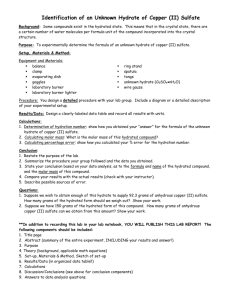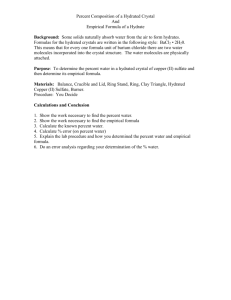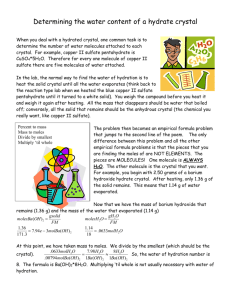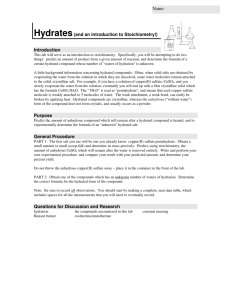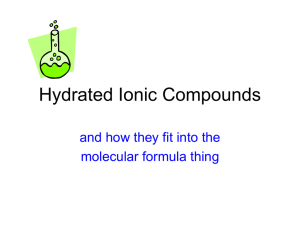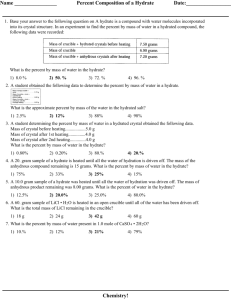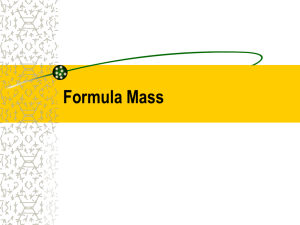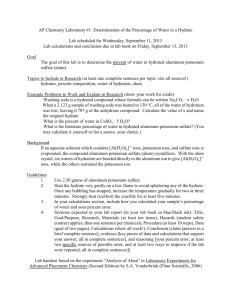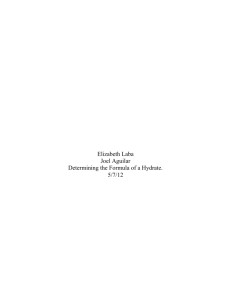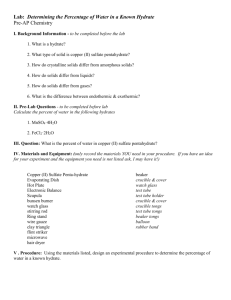Copper Sulfate Hydrate Lab Report Instructions
advertisement
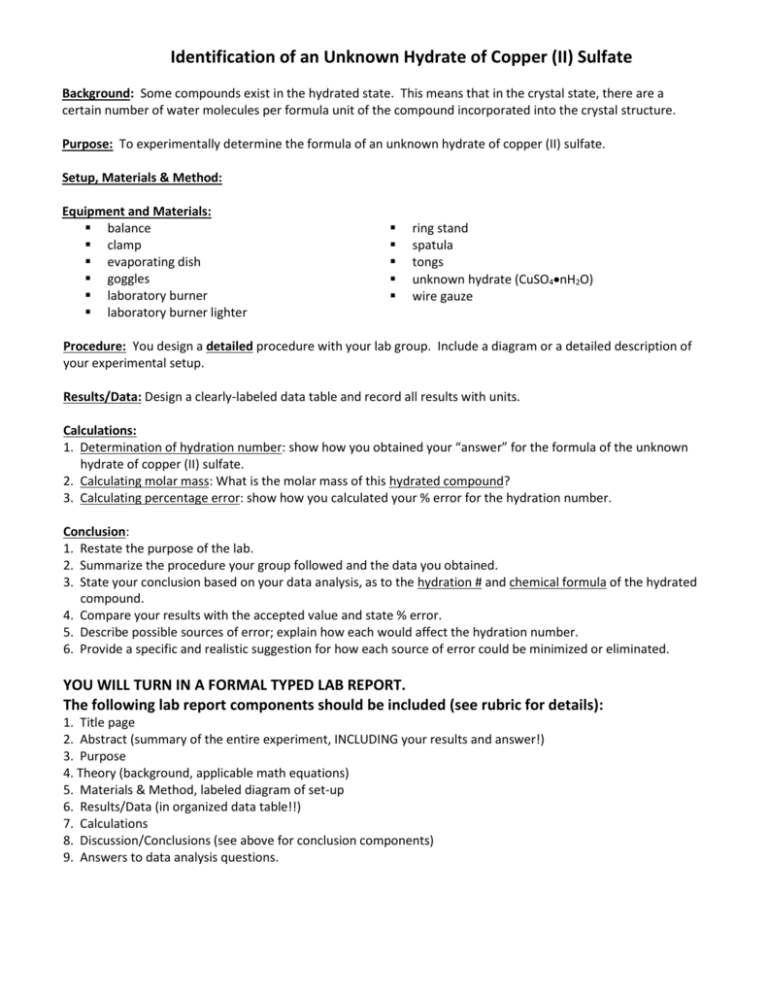
Identification of an Unknown Hydrate of Copper (II) Sulfate Background: Some compounds exist in the hydrated state. This means that in the crystal state, there are a certain number of water molecules per formula unit of the compound incorporated into the crystal structure. Purpose: To experimentally determine the formula of an unknown hydrate of copper (II) sulfate. Setup, Materials & Method: Equipment and Materials: balance clamp evaporating dish goggles laboratory burner laboratory burner lighter ring stand spatula tongs unknown hydrate (CuSO4nH2O) wire gauze Procedure: You design a detailed procedure with your lab group. Include a diagram or a detailed description of your experimental setup. Results/Data: Design a clearly-labeled data table and record all results with units. Calculations: 1. Determination of hydration number: show how you obtained your “answer” for the formula of the unknown hydrate of copper (II) sulfate. 2. Calculating molar mass: What is the molar mass of this hydrated compound? 3. Calculating percentage error: show how you calculated your % error for the hydration number. Conclusion: 1. Restate the purpose of the lab. 2. Summarize the procedure your group followed and the data you obtained. 3. State your conclusion based on your data analysis, as to the hydration # and chemical formula of the hydrated compound. 4. Compare your results with the accepted value and state % error. 5. Describe possible sources of error; explain how each would affect the hydration number. 6. Provide a specific and realistic suggestion for how each source of error could be minimized or eliminated. YOU WILL TURN IN A FORMAL TYPED LAB REPORT. The following lab report components should be included (see rubric for details): 1. Title page 2. Abstract (summary of the entire experiment, INCLUDING your results and answer!) 3. Purpose 4. Theory (background, applicable math equations) 5. Materials & Method, labeled diagram of set-up 6. Results/Data (in organized data table!!) 7. Calculations 8. Discussion/Conclusions (see above for conclusion components) 9. Answers to data analysis questions.
